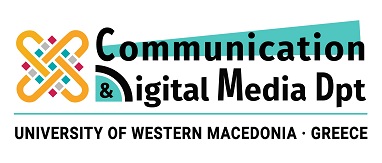CDM 5234 DIGITAL MEDIA AND EDUCATION
LEVEL OF STUDY: UNDERGRADUATE
COURSE UNIT CODE: CDM 5234
SEMESTER: 5th
COURSE TITLE: DIGITAL MEDIA AND EDUCATION
TEACHING WEEKLY HOURS: 3 H/W LECTURES
ECTS: 4
COURSE TYPE: CORE ELECTIVE
TEACHING AND EXAM LANGUAGE: GREEK
COURSE DELIVERY TO ERASMUS STUDENTS: YES (in English through project work)
The aim of the course is to introduce the student to the New Technologies used in the educational process. Today there is a wide range of digital applications that upgrade the educational process and promote e-learning and distance learning such as:
- Multimedia interactive applications for learning scientific objects
- Intelligent tutoring systems
- Adaptive Hypermedia
- Learning management systems (LMS) and educational activity management systems
- Mass online open learning platforms (MOOCS), Video learning and interactive videos,
- Web 2.0 applications and social networks in learning
- Collaborative learning systems (Wikis, Google Docs)
- Games Based Learning
- Online platforms for Quizzes (eg Kahoot, Quizzes, Google Forms)
- Gamification
- Virtual and augmented reality in learning
- Analysis of educational data and extraction of knowledge from educational environments (Learning analytics and Educational Datamining)
Also, in the course the student will be taught the basic learning theories and the role of new technologies with special emphasis on the Cognitive Theory of Multimedia Learning.
The course will also analyze case studies where innovative and effective technologies and methods have been applied in schools and educational institutions.
The aim of the course is for the student to get a complete picture of how new technologies affect the educational process today and how they are expected to shape education in the near future.
Upon successful completion of the course the student will be able to:
- To know and be able to categorize and evaluate the various application technologies in education as well as to distinguish the differences between them.
- To judge, select and combine the appropriate technologies that can be applied in different educational environments and at different levels and types of education (eg pre-school education, primary, secondary, tertiary, special education, adult education, ex. distance learning etc.).
- Evaluate and compare educational technologies according to the desired field of application.
- To know the basic theories of learning and to apply the principles of these theories in the design of educational material
- To adapt his knowledge to an environment where new technologies in education are constantly evolving.
